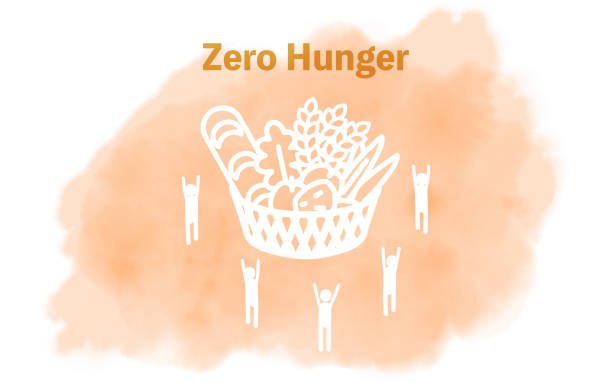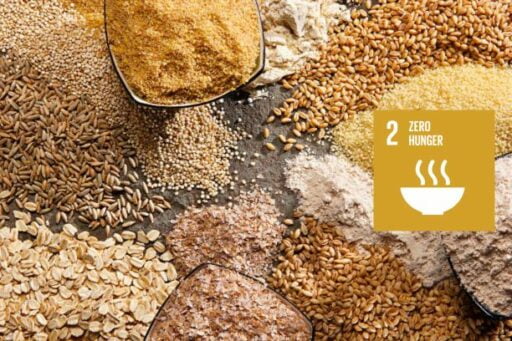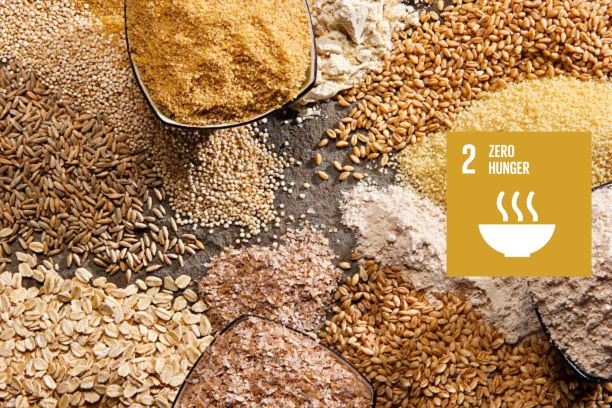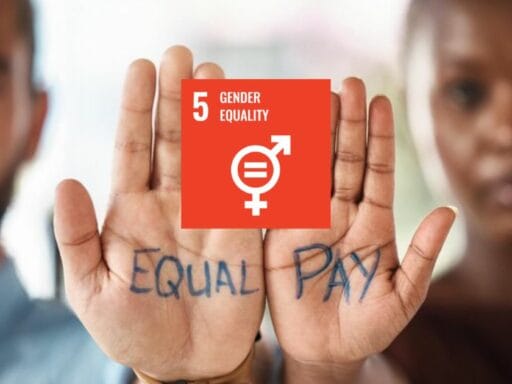A vital component of the 17 Sustainable Development Goals (SDGs) established by the UN is SDG Goal 2: Zero Hunger. It aims to eradicate hunger, ensure food security, enhance nutrition, and advance sustainable agriculture by 2030. One of the most important global concerns of our day is guaranteeing access to adequate food. This is crucial, as 690 million people worldwide still suffer from malnutrition. This blog examines the main features of SDG Goal 2 and its importance. It also covers doable methods for reaching the goal and the roles that various organizations are playing in bringing it to pass.
Overview and Importance of SDG Goal 2
The quality of food is an objective of the Zero Hunger movement in addition to its availability. Its main goal is to eradicate all types of hunger and malnutrition by making sure everysingle’s contribution. And it includes that everyone, especially the elderly and vulnerable populations, has access to enough food throughout the year. Furthermore, SDG 2 highlights how important sustainable agriculture is in addressing issues like biodiversity loss, climate change, and environmental degradation.
It is impossible to overestimate the importance of SDG Goal 2. Reducing hunger is crucial for enhancing social stability, economic productivity, and public health. Hunger makes poverty worse, keeps kids from learning, and lowers people’s quality of life in general. Not only would ending hunger save lives, but it would also promote human growth and enable societies to prosper.
SDG 2 focuses on sustainable agriculture in addition to hunger and malnutrition with different goals. Like ensuring that farming techniques do not jeopardize future generations’ capacity to satisfy their own food needs. In addition to lowering carbon emissions and ensuring the long-term viability of agricultural resources, sustainable food systems also support biodiversity.
Key Targets of SDG Goal 2
Achieving SDG Goal 2: Zero Hunger needs global collaboration across all sectors. This aim has several significant targets, including:
- By 2030, we will have eliminated hunger and ensured that everyone has access to safe, healthy, and adequate food.
- End all kinds of malnutrition, including stunting and wasting in children under five, while also meeting the nutritional needs of teenage females, pregnant and lactating mothers, and the elderly.
- By 2030, small-scale food producers’ agricultural output and earnings will have doubled, particularly among women, indigenous peoples, and family farmers.
- Ensure the sustainability of food production systems by implementing resilient agricultural methods that boost productivity and production while also ensuring ecosystem sustainability.
- Maintaining the genetic variety of seeds, cultivated plants, farmed and domesticated animals, and promoting fair markets.
These goals are ambitious and interrelated, addressing both the need for greater food security and the need of sustainable agriculture in ensuring long-term food availability.
The Role of Sustainable Agriculture in SDG Goal 2
Sustainable agriculture is a key component of SDG Goal 2, as it not only assures food supply but also combats climate change, soil erosion, and biodiversity loss. Crop rotation, agroforestry, and the use of organic fertilizers are examples of sustainable farming methods. These practices can help restore ecosystems and lessen the environmental impact of food production.
For example, agroforestry, which incorporates trees into agricultural systems, has been shown to improve biodiversity while delivering extra resources such as lumber, fruit, and animal feed. This increases resistance to climate change and helps to ensure overall food security.
Farmers may also employ precision agricultural technologies to increase crop yields while minimizing waste and the usage of toxic pesticides. These methods ensure that future generations can benefit from healthy, fruitful lands.
Case Study: World Food Programme (WFP)
WFP a crucial participant in the battle against hunger, aims to achieve SDG Goal 2 through a variety of initiatives. WFP stands for World Food Programme. These initiatives offer emergency food assistance and help establish self-sustaining food systems. WFP efforts are aimed at providing both short-term assistance and long-term solutions to hunger.
One of the WFP’s most important projects is its School Meals Program. This program distributes healthy meals to millions of students throughout the world. In addition to eliminating hunger, school lunches promote education. They can also help to break the cycle of poverty by helping children to focus and perform better in school.
WFP has offered critical support in countries such as Yemen and South Sudan, where conflict and instability have resulted in major hunger crises, through food distribution and by assisting in the development of community resilience. Their initiatives have saved lives and laid the framework for long-term food systems capable of overcoming future crises.
Case Study 2: FAO’s Role in Sustainable Agriculture
The Food and Agriculture Organization (FAO) has played a key role in promoting sustainable farming methods that directly contribute to attaining SDG Goal 2. In collaboration with governments and other stakeholders, FAO creates policies to assist smallholder farmers to adopt more sustainable practices.
FAO supported a successful initiative in Ethiopia that introduced drought-resistant crops to fight the negative impacts of climate change. Farmers were taught how to cultivate crops that require little water, such as sorghum and millet, which have flourished in desert locations.
This effort reduced food insecurity in vulnerable areas while encouraging climate-resilient agriculture techniques. As part of a larger effort to alleviate hunger, FAO continues to promote sustainable agricultural methods and policies that safeguard both the environment and food security.

Practical Solutions for Achieving Zero Hunger
Achieving SDG Goal 2 necessitates a multifaceted strategy that addresses both the immediate needs of individuals experiencing hunger and the long-term sustainability of food production. Here are some effective strategies:
- Strengthen Social Safety Nets: Governments can set up food aid programs, subsidies, or cash transfers to help households meet their food needs during economic downturns or in conflict-affected areas.
- Invest in Small-Scale Farmers: Supporting small-scale farmers with loans, training, and markets will enable them to increase production and revenue, therefore supporting local food security.
- Promote Sustainable Agricultural Practices: Encouraging farmers to practice crop variety, organic farming, and the use of renewable energy in agriculture benefits ecosystems and assures long-term food production.
- Enhance Market Access: Ensuring smallholder farmers’ access to local and international markets can boost revenue and open up new prospects for sustainable agricultural output.
- Increase Public Awareness: Educating the public on the benefits of sustainable food consumption, minimizing food waste, and assisting local farmers may all help SDG Goal 2 achieve its objectives.
FAQs
🤔 What is SDG Goal 2?
Answer: SDG Goal 2 is the United Nations’ global goal to end hunger, achieve food security, improve nutrition, and promote sustainable agriculture by 2030.
🤔 Why is Zero Hunger important??
Answer: Ending hunger is vital to boosting health, promoting economic growth, and establishing stable communities. Hunger causes poverty, inequality, and diminished human capital, which impedes overall development.
🤔 How can businesses contribute to SDG Goal 2?
Answer: Businesses may practice sustainable procurement, limit food waste, and support community-based agriculture projects. Companies that promote sustainable supply chains can contribute to global food security.
🤔 What are the challenges in achieving SDG Goal 2?
Answer: Conflict, climate change, and economic inequality are all major causes of food insecurity. These difficulties necessitate concerted worldwide efforts to address the underlying causes of hunger.
🤔 How does climate change affect SDG Goal 2?
Answer: Climate change has an influence on food production by causing droughts, floods, and shifting weather patterns, making crop cultivation more difficult. Sustainable agricultural methods are critical for mitigating these consequences and ensuring food security.
Conclusion
SDG Goal 2: Zero Hunger lays forth a vision for a society in which everyone has access to nutritious food and sustainable agriculture practices are the norm. As the globe approaches 2030, attaining Zero Hunger will need the collaboration of governments, companies, non-profit organizations, and people. It’s not just about food; it’s about building systems that are equitable, sustainable, and robust. The progress gained today in supporting sustainable food systems and eradicating hunger will shape the future of global well-being and wealth.








